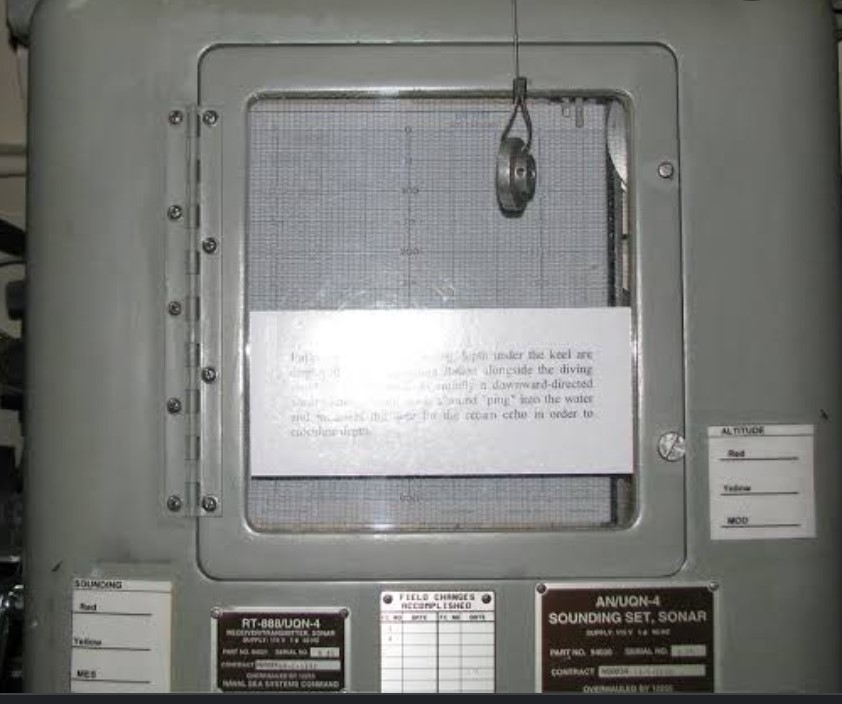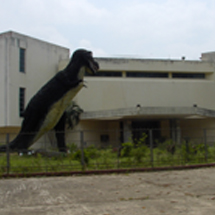সর্ব-শেষ হাল-নাগাদ: ২৭ মে ২০২২
রাডার প্রদর্শন এবং এন্টেনা
রাডার একটি বস্তু সনাক্তকরণ অবস্থার যা ইলেক্ট্রোম্যাগনেটিক তরঙ্গ বিশেষভাবে বেতার তরঙ্গের মাধ্যমে চলন্ত অস্থির উভয় ধরনের বস্তুর পাল্লা উচ্চতার দিক বা গতি নির্ধারণের ব্যবহৃত হয় যেমন বিমান মহাকাশযান নিয়ন্ত্রিত মোটরযান আবহাওয়ার গঠন এবং ভূখণ্ড প্রভৃতি। রাডার ডিস এন্টেনা বাবা-মার ক্রস তরঙ্গের প্রেরণ করে যে লক্ষ্যবস্তুর কর্তৃক প্রতিফলিত হয়। ক্রেদিত তরঙ্গ শক্তির ক্ষুদ্রাংশ সাধারণত ট্রান্সমিটারের পাশে অবস্থিত রাডার ডিস এন্টিনার ফিরে আসে ব্যবহার গোপনীয়ভাবে ব্রিটেন এবং অন্যান্য জাতির দ্বিতীয় বিশ্বযুদ্ধের সময় বিকশিত হয়েছিল এবং 1946 সালে মার্কিন বাহিনী সর্বপ্রথম শব্দটি ব্যবহার করে আধুনিক ব্যবহার এয়ার ট্রাফিক নিয়ন্ত্রণ জ্যোতির্বিদ্যা প্রতিরক্ষাব্যবস্থা ক্ষেপণাস্ত্র প্রতিরোধ ব্যবস্থা থেকে ভূমি ও অন্যান্য সনাক্তকরণ বিমান সংঘর্ষ প্রতিরোধ ব্যবস্থা মহাসাগর নজরদারি ব্যবস্থা নজরদারি ব্যবস্থা, বহিঃস্থ স্পেস নজরদারি ও মিলন অফ ব্যবস্থা আবহবিদ্যা গত বৃষ্টিনির্ভর উচ্চতাভীতি অফ লাইট নিয়ন্ত্রণ ব্যবস্থা নিয়ন্ত্রিত ক্ষেপণাস্ত্র ব্যবস্থা এবং ভূতাত্ত্বিক পর্যবেক্ষণের জন্য অনুপ্রবেশের ব্যবস্থাসহ অত্যন্ত বৈচিত্র্যপূর্ণ। উচ্চ প্রযুক্তির অর্ডার ব্যবস্থা ডিজিটাল সিগন্যাল প্রসেসিং এর সঙ্গে সম্পৃক্ত এবং উচ্চ। উচ্চতর স্তর থেকে সঠিক তথ্য আরোহন আহরণ করতে সক্ষম হয়ে থাকে চুম্বকীয় বর্ণালীর অন্যান্য অংশ ব্যবহার করে রাডারের অনুরূপ ব্যবস্থা ব্যবহৃত হয়ে আসছে।

Radar is an object detection shstem whnich uses electromagnetic waves specifically radio waves to determine the range, altitude, direction, or speed of both moving and fixed objects such as aircraft, ships, spacecraft, guided missiles, motor vehicles, weather, formations and terrain. The radar dish, or antenna, transmits pulses of radio waves or microwaves which bounce off any object in their path. The object refturns an tiny part of the wave’s energy to a dish or antenna which is usually located at the same site as the transmitter. Practical radar was developed in secrecy during World War II by Britain and other nations. The term Radar was coined in 1940 by the U.S Navy as an acronym for radio detection and raging. The term radar has since entered the English and othe r languages as the common noun radar, losing all capitalization. In the United Kingdom, the technology was initially called RDF (range and direction capability), using the same initials used for radio direction finding to conceal its ranging capability. The modern uses of radar are highly diverse, including air traffic control, radar astronomy, air defense systems, antimissile systems, nautical radars to locate landmarks and other ships aircraft anticollision systems, ocean surveillance systems, outerspace surveillance and rendezvous systems, meteorological precipitation monitoring, altimertry and flight control systems, guided missile target locating systems, and ground penetrating radar for geological observations. High tech radar systems are associated with digital signal processing and are capable of extracting objects from very high noise levels. Other systems similar to radar have been used in other parts of the electromagnetic spectrum. One example is lidar which uses visible light from lasers rather than radio waves.
সর্বশেষ খবর
পবিত্র ঈদ-উল-ফিতর, ২০২৫ উপলক্ষে আগামী ২৭ মার্চ ২০২৫ থেকে ৪ এপ্রিল ২০২৫ তারিখ পর্যন্ত জাতীয় বিজ্ঞান ও প্রযুক্তি জাদুঘরের গ্যালারী প্রদর্শনী কার্যক্রম বন্ধ থাকবে।
Array
(
[id] => 7940452d-2f6d-4e42-8f87-8afb3227ed08
[version] => 63
[active] => 1
[publish] => 1
[created] => 2015-01-25 15:58:17
[lastmodified] => 2024-11-03 13:26:54
[createdby] => 136
[lastmodifiedby] => 2598
[domain_id] => 6414
[office_id] =>
[menu_id] =>
[title_bn] => মহাপরিচালক
[title_en] => Director General
[body_bn] =>
[body_en] =>
[userpermissionsids] =>
[uploadpath] => e9005938-c62a-4cda-bdf2-fb21556182fc
[userip] => 127.0.0.1
[useragent] => Mozilla/5.0 (Windows NT 10.0; Win64; x64) AppleWebKit/537.36 (KHTML, like Gecko) Chrome/130.0.0.0 Safari/537.36
[usergeo] =>
[is_right_side_bar] => 1
[office_head_photo] => Array
(
[0] => Array
(
[name] => 2024-11-03-07-22-6b2a72f3355ff271bf2bf600fddeeab8.jpg
[caption_bn] => মহাপরিচালক
[caption_en] => Director General
[link] =>
)
)
[office_head_description] => মহাপরিচালক
[office_head_des_bn] => মুনীরা সুলতানা এনডিসি
মুনীরা সুলতানা এনডিসি, অনানুষ্ঠানিক বিজ্ঞান শিক্ষা কার্যক্রমের মাধ্যমে একটি বিজ্ঞানমনস্ক জাতি গঠনের লক্ষে ৩১ অক্টোবর, ২০২৪খ্রিঃ তারিখে জাতীয় বিজ্ঞান ও প্রযুক্তি জাদুঘরের মহাপরিচালক হিসেবে দায়িত্ব গ্রহণ করেন।
তিনি ১৯৯৩ সালে বাংলাদেশ সিভিল সার্ভিস প্রশাসন ক্যাডারে যোগদানের মধ্য দিয়ে কর্মজীবন শুরু করেন। তিনি বেশিরভাগ সময় বিভিন্ন মন্ত্রণালয় ও অধিদপ্তরে এবং মাঠ প্রশাসনে দায়িত্ব পালন করেন। ঢাকা বিশ্ববিদ্যালয় থেকে উদ্ভিদবিদ্যা বিভাগ থেকে তিনি স্নাতকোত্তর ডিগ্রি অর্জন করেন। চাকরিতে কর্মরত অবস্থায় তিনি নর্দান ইউনিভার্সিটি, ঢাকা থেকে গভর্নেন্স স্টাডিজ বিষয়ে দ্বিতীয় স্নাতকোত্তর ডিগ্রি অর্জন করেন। তিনি ২০১৮ সালে ন্যাশনাল ডিফেন্স কলেজ থেকে ন্যাশনাল ডিফেন্স কোর্স সাফল্যের সাথে সম্পন্ন করেন।
চাকুরিরত অবস্থায় তিনি দেশে এবং বিদেশে বিভিন্ন পেশাগত প্রশিক্ষণ কোর্স সাফল্যের সাথে সম্পন্ন করেন। একটি বিজ্ঞানমনস্ক জাতি গঠনে এবং সারা দেশে বিজ্ঞান ও প্রযুক্তির সুফল ছড়িয়ে দিতে তিনি নিরলস কাজ করে যাচ্ছেন।
[office_head_des_en] => Munira Sultana ndc
Munira Sultana ndc, took charge as Director General of National Museum of Science and Technology on October 31, 2024 with the aim of building a science minded nation through informal science education programs.
She started her carrier in the Bangladesh Civil Service administration cadre in 1993. She served mostly in field administration and different ministries and directorate. She earned her degree of M.Sc. in Botany from the University of Dhaka. While in service, she earned a second Masters degree in Governance Studies from the Northern University, Dhaka. She completed the National Defense Course successfully in 2018 from National Defense College.
She acquired various professional training courses during her service period in home and abroad and keenly interested in building a science minded nation and spread the blessings of Science and Technology across the country.
[designation] =>
[designation_new_bn] => মহাপরিচালক
[designation_new_en] => Director General
[weight] => 0
)
=======================
কেন্দ্রীয় ই-সেবা
পথ নির্দেশিকা

হটলাইন

সামাজিক যোগাযোগ

জরুরি হেল্পলাইন নম্বর




.jpg)













